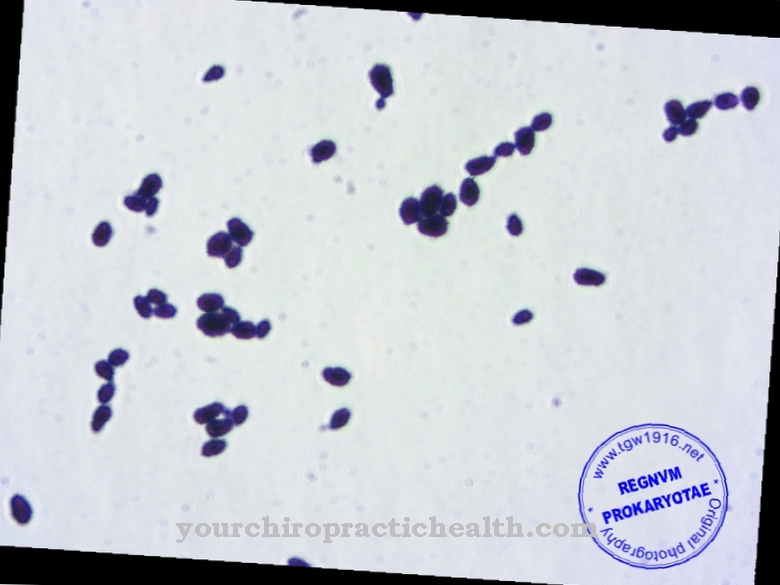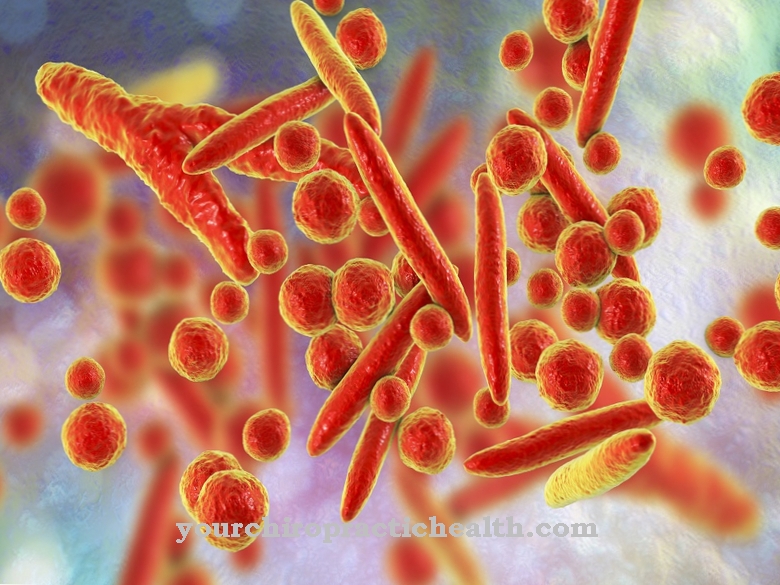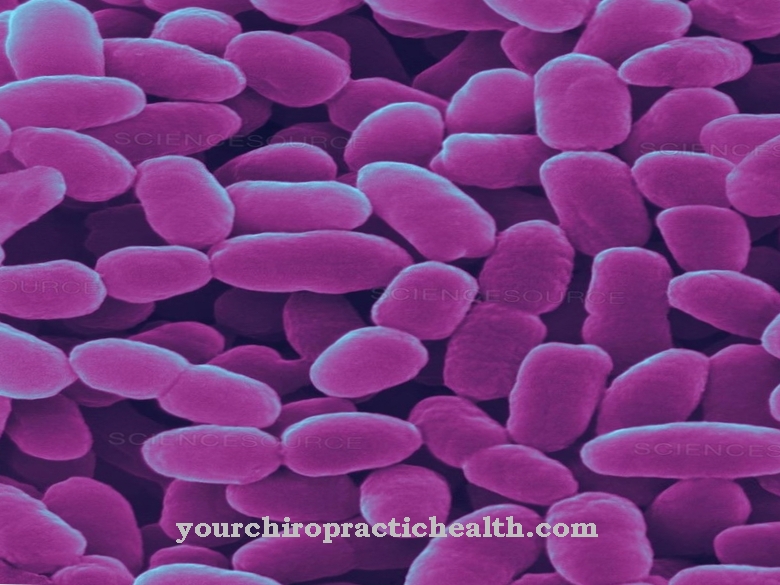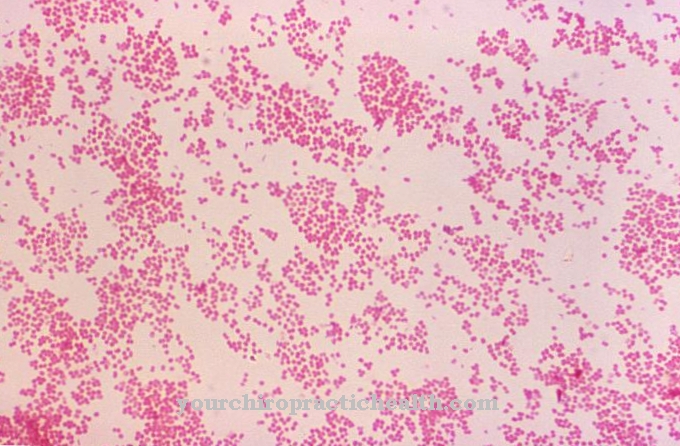Staphylococci (lat. Staphylococcus) are bacteria that belong to the subgroup of cocci. They look round to grape-like and are immobile. They were first detected in 1884 by Friedrich Julius Rosenbach.
What are staphylococci?
Staphylococci are pathogens which, due to their increased pH tolerance, are relatively insensitive to various disinfectants and to dehydration.
For this reason they are widespread and very difficult to neutralize. They also develop resistance to antibiotics extremely quickly, as their genetic structure adapts to the conditions of their environment and thus guarantees survival.
Antibacterial agents are often unsuccessful, so that a high concentration of staphylococci can often be detected in hospitals and care facilities, which can also lead to illnesses in people with a weakened immune system.
Some strains of this type of bacteria have the property of being able to spread very quickly, which leads to the occurrence of epidemic diseases.
Meaning & function
Staphylococci normally settle on the skin and on the mucous membranes of humans and animals without the outbreak of disease or disease symptoms. However, if the body is no longer able to maintain the immune system due to previous illnesses or other causes, diseases and infections caused by the staphylococci can occur.
The main reservoir for staphylococcal infections is humans themselves. An increased colonization with staphylococci was found in particular in people who work in the healthcare sector, in people with extensive, infectious skin diseases, in diabetics and people from the drug scene.
An infection can develop from a person's own colonization with staphylococci if the pathogen spreads to other areas of the body, such as the throat or the mucous membranes. Foreign infections mostly occur through contact from patient to patient or through contact with nursing staff or the treating doctors.
The starting points of such foreign infections are mostly in wound secretions, secretions from the respiratory tract, infectious skin areas or in the blood of infected people. Medical devices can also be used as bacteria carriers.
Patients who suffer from diabetes mellitus or are dependent on dialysis have proven to be particularly susceptible to staphylococcal infections. If the skin barrier against the penetration of germs is no longer complete for whatever reason, those affected are also particularly susceptible to infection by staphylococci. This is the case, for example, with skin injuries.
The permanent presence of foreign bodies also leads to an increased risk of infection, for example when wearing venous catheters or when using metal alloys for joint replacements.
Diseases
Another manifestation of diseases through Staphylococci are food poisoning. Especially with meat and dairy products, toxins are created by the breakdown products of staphylococci and lead to corresponding symptoms of poisoning.
In the case of poisoning, the incubation time until the symptoms appear is relatively short and is only a few hours; in the case of an infection by staphylococci, it can be 4-10 days. If a patient carries a colony of these germs, there is a possibility that the disease will take months to manifest.
This phenomenon occurs, for example, when staphylococci remain in the body after an operation and only become active again through other influences and spread in the organism. In this way, severe general infections or wound infections can break out even months or even years later.
Some examples of conditions caused by staphylococci are boils, abscesses, carbuncles, wound infections, meningitis, jaundice and pneumonia. In severe cases, such an infection can turn into general sepsis, which is life-threatening in any case.
Toxic Shock Syndrome, or TTS for short, is also a consequence of poisoning caused by staphylococci. With TTS there is a risk of taking on a severe form. TTS is therefore an extremely dangerous disease.
Food poisoning caused by staphylococci should not be underestimated either; the symptoms appear relatively promptly and manifest themselves in violent abdominal cramps, diarrhea and excessive vomiting. Since staphylococci are relatively heat-resistant, they are often not completely destroyed when food is heat treated.
If the occurrence of epidemic diseases that can be traced back to staphylococci is found in a medical facility, these must be reported in accordance with the Federal Disease Protection Act.

























.jpg)

.jpg)
